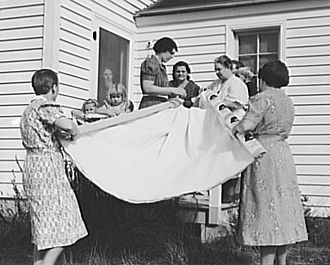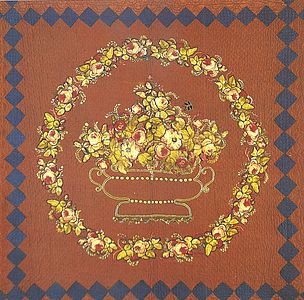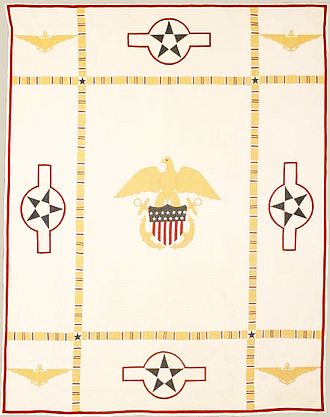Quilt Preservation
Quilt preservation and transmission provides valuable information as vernacular modes of memory. The collection of quilts associated with war examines provenance and family stories—all aspects of memory. The collection of these particular items proves modern interest. Michael Kammen poses the question: “We must ask what they collected, and then the more complicated question why (complicated because the answers are so diverse and combined in various patterns), and finally inquire about the cultural consequences and legacies of their activities and criteria as collectors: consequences for the museums and other institutions, for the dominant configuration of social values, and for human relationships.”49 The actual provenance of a commemorative quilt proves agency in the historical remembering process.
Families preserved their quilts—along with their stories about the quilts—to link their connection to the war, their allegiances to their causes, and their witnesses of participation, hardship, and national loyalty. Cerny comments that generally stories of quilt creation or meaning are handed down orally, based on personal reminiscences and brief anecdotes.50 For example, Martha Bullock’s Alabama Gunboat quilt was sold several times to raise money. Family lore states that a wealthy Texan purchased the quilt and returned it to the family. Martha decided she would honor her own mother by passing the quilt and its story down to her daughters.51
Generally, provenance records indicate that women passed the quilts they made on to their daughters. The matrilineal line illustrates what Ulrich terms “the core of female inheritance.”52 Others found interest in these nostalgic old quilts associated with what Kammen terms a “sheer love of country: old-fashioned patriotism that often verged upon chest-thumping chauvinism.”53 Ulrich echoes Kammen with her study of material culture and its value. “For a people caught in the march of mechanization, antique tools and scraps of old fabric evoked a world that seemed simpler and more authentic than the one they knew.”54 The quilts and their stories testify to a heroic past, testaments of endurance, of sacrifice, of struggle, and of enduring beliefs.
A resurging interest in quilts to commemorate war occurred with World War II. The New England Quilt Museum presented an exhibition of quilts associated with the War in 2005. Made in a time where the utility of the quilt was no longer necessary, these quilts hearken back to Civil War quilts. Like the war quilts from nearly a century earlier, these quilts illustrate loyalty to the Allied cause, family connection to the War, and local community roll calls. One popular quilt pattern celebrates the wonders of modern naval technology with a quilted design of Navy insignia and anchors. The wrapper states: “Today when we are constantly reminded of the importance of Aviation by the hum of motors overhead, it seems only fitting that we honor the men and women who are flying those planes. Thousands of our young people are learning to fly and think nothing but ‘wings.’ So, these quilts are designed as a keepsake from these days of progress.”55 Kammen notes that in an age of anxiety, Americans often shift to tradition. Concerns about national security and swift social change can produce a profound sense of historical discontinuity.56 After 9/11, several significant quilt exhibits have displayed at the Pentagon, evidence of the nostalgic tradition to commemorate through quilts.57
A renewed interest in Civil War-era quilts has emerged. Barbara Brackman has published two books with stories and patterns of Civil War quilts. She encourages readers to “forge a personal link to the women of the Civil War by copying the quilts of the day.” Reproduction quilts, she believes, stretch myth and memory into present-day lived history.58 Websites showcase contemporary designs of Civil War quilt patterns, drawing upon popular themes and symbols passed down through war memories. Some make suggestions for finding appropriate colors and homespun fabrics.59 The Antiques Roadshow has highlighted commemorative Civil War quilts selling for thousands of dollars.60 It is not just the memory of individual experience with war, but the traditional domestic forms of memory that prove powerful to the present day.
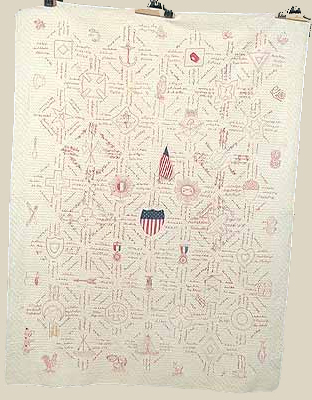
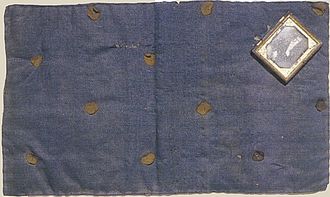
When Dr. Prentiss purchased his Revolutionary War quilt at the Kansas raffle in 1855, he participated in the making of historical memory. The ideology of freedom and liberty permeated the fabric in such a palpable way that he cut the quilt into sections for his descendants, hoping to pass on to them the support of the Union and democracy. War quilts from the Civil War and World War II eras illustrate the construction of historical memory. The witnesses of participation on the battlefield and at the home front reveal the personal experiences of war. Lists of names and battles, political images of national and sectional loyalty, marks of hardship, holes and faded colors testify of participation. Stories passed down through posterity mingle with fabric, to tell, to touch, to cover, and to remember.
